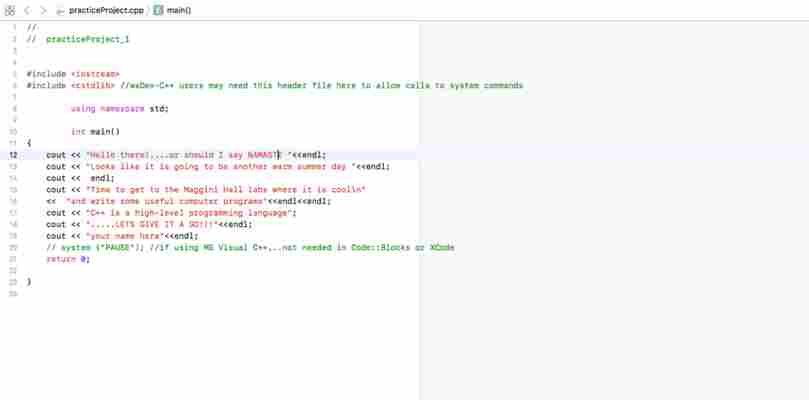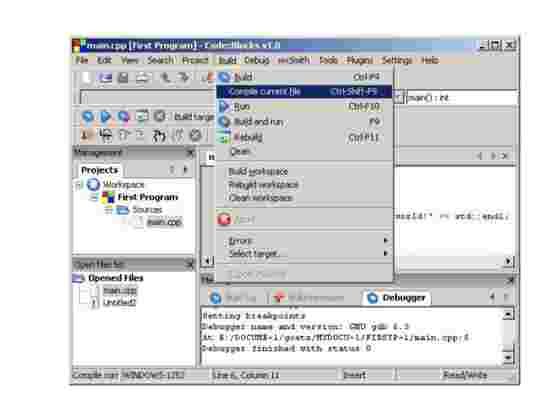If you’re new to Code::Blocks IDE and you’ve already downloaded and installed the program, it’s a good time to create your first program. We’ll go over the steps to create a specific starter program using Code::Blocks and programming in C++. This is a great way to get familiar with the layout and workings of the software.
Add files to your project
Follow these steps to add files:
Edit your files
Syntax
In C++ there is no special syntax for streaming data input or output. Instead, these are combined as a library of functions. Iostream provides basic input and output services for C++ programs; it must be included for your program to function properly. This is why we must include the #include< Iostream> line in our program.

We also must include the #include
cout << “Hello there!….or should I say NAMASTE “< Be sure to use correct beginning and ending statements with each line of code. For basic C++ syntax please see this link. Input the following code into your project (see the image above for comparison): #include using namespace std; int main() { cout << “Hello there!….or should I say NAMASTE “< } Then save your work. Compiling After you complete the writing and editing of your program, you must compile the file. To do this, first go to the Build menu and select Compile Current File (or Ctrl+Shift+F9). Next, test your project. From the Build pull-down menu, click Build and Run . This step will build an executable file for you. A project build takes the compiled versions of your source files and combines them into one single program. Your program output will now be displayed. You will see all of the text you wrote in between the quotes displayed as program output. If an error is displayed, check the syntax of your code and check for missing pieces, or unintentional errors. Although this is a very simple program, it is the foundation for beginning to write more in-depth programs in Code::Blocks. As your programs increase in length and depth, the same basic steps apply. Happy programming! Sources: https://www.cprogramming.com/tutorial/lesson1.html https://en.wikipedia.org/wiki/Code::Blocks
